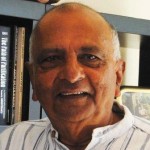The Myth At The Bottom Of Our Problem

Ever since its political independence Sri Lanka has never been able to solve its central national crisis in relationship between the majority Sinhalese and minority Tamil speaking communities. The souring relationships began with a veneer of cordiality between leaders like DS Senanayake, Ponnambalam Ramanathan and GG Ponnambalam. The veneer was removed at the stage when SJV Chelvanayakam, in reaction to visible signs of obduracy on the part of Sinhala leaders, demanded Federal Government. It became an obvious chain reaction on both sides of the now growing divide in the national fabric of our society. Mutual suspicions between the communities sprouted and a struggle ensued with demands and counter demands. SWRD Bandaranaike brought the process to a head with communal riots unfolding and stances on both sides hardening. The culmination was represented by the rise of the LTTE and the consequent civil war that put the clock of progress back and diverted invaluable national resources away from infrastructure development, agriculture, health and education towards the killing fields of destruction.
The war now technically over, has not put the problem to rest. The old process of demands and rebuffs have strangely resurrected itself in a different milieu and context with mounting internationalization of the national conflict. The LTTE Diaspora is out there very active and India is increasingly restive under Tamilnadu pressure. These are all new developments not present during the early phase of conflict referred to above.
There are fresh demands for ‘self-determination,’ or autonomy under the current new order of Tamil leadership. It is doubtful that such political proposals would be successful considering the experiences of the recent past. To the Sinhala people Prabhakran had been a bitter experience when innumerable attempts at peaceful mediation had come a cropper with Prabhakaran giving his word and later breaking it all utilizing the pauses just in order to regroup his forces. To many Sinhala leaders the suspicion is real that a proposal for some kind of autonomy would likewise be utilized by the Tamil leadership to launch a separate state. Both the demand for self-determination, whatever that may mean, and its rejection are thus equally racist phenomena and the issue will not be settled because of that. These futile exercises will only help to harden identities and to entrench the very myth that lies at the bottom of the problem. Read More

